One of the most frequently asked questions I get is “when do I stop watering in the fall?” For some that might seem like a relatively simple question to answer – “summer is the season for growing and fall is when everything starts to die, so when autumn rolls around it’s time to stop watering, right?” Well, no, not really. The question – and answer – is a little more complicated than that.
Different plants have different needs. Fall is when shrubs and perennials get busy growing their roots. After spending the summer putting all their time and energy into leaf and flower growth, and then fruit and seed production, they use autumn to take better care of their root systems.
Autumn is perfect for root growth because the soil is warmed up from all of those sunny, hot days of summer. The autumn season provides warm days with nicely-cooled nights and hopefully some regular rainfall to encourage the plants to grow and anchor into the earth.
However…if we have a dry fall, those plants can quickly start to dehydrate, so they may need some augmented watering from you about every week or two to help those roots along. Here in Massachusetts, the state Drought Management Task Force indicates in its latest report that “dry hydrologic conditions have been developing in some regions of the state and have become worse in the past few weeks.” In other words, be prepared to water plants in need a little more.
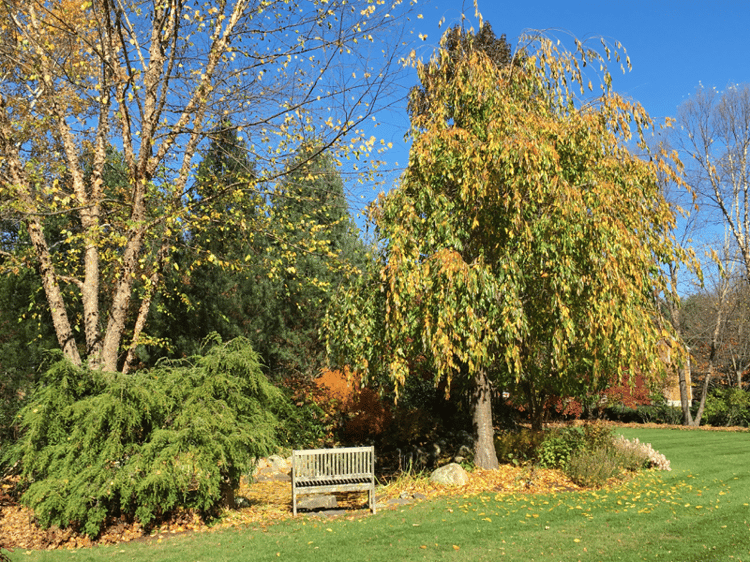
As plant foliage fades, it's an indication that the juices are flowing down into the root systems.
In general, if the temperature is warm and the weather's reasonably windy then you should continue to water. Wind is drying, so if it’s blowing while all of the plant “juices” are flowing downward to get to the roots, then you’ll get dehydrated tissue.
Plants are working hard to transition from the growing season to the dormant season. They send fluids downward which is why leaves fall off. If it stops raining too early in the fall while the juices flow down leaves will desiccate – they’ll dry out -- which is okay if it’s late enough in the season. But if it happens too soon during the transition it could kill off essential buds and stress your plants at a critical time.
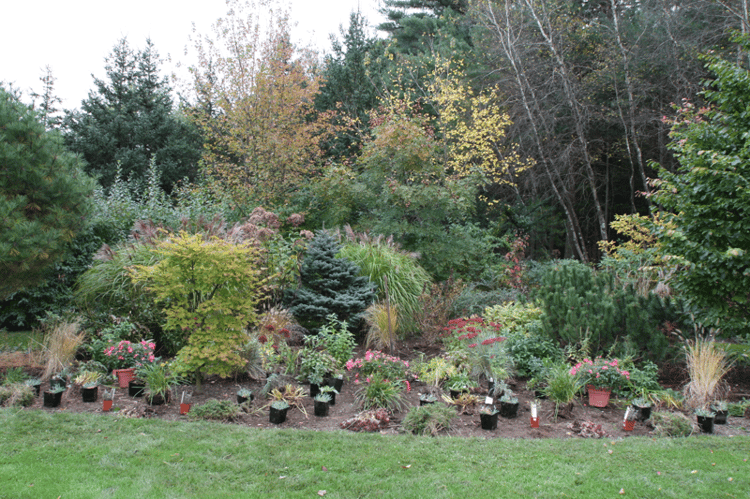
Fall is a great time to divide, transplant and plant new. Just remember to water up to frost.
It’s important to fortify root systems with healthy hydration, so they have adequate water to deal with the high winds, cold temperatures, and drying sun of winter. However, not all areas of the garden need the same water. South-facing plants need more water while north-facing ones will hold water. So while it may be time to turn your irrigation system off, it’s a good idea to keep your hoses out and plan to hand water select plants.
Newly installed plants especially need water, as well as transplants and plants that are subject to special attention, such as evergreens which never get a break from weather damage. Their foliage is exposed year-round to the harsh effects of wind, sun, and potentially dry conditions. It’s up to the gardener, guided by the local conditions, and present weather patterns, to offer some watering in the fall season and right on up to the first frost is as a good gardening practice.
You may also like to read our blog titled "7 Habits of Successful Waterers."
Remember, fall runs all the way to December 21st. Don’t be fooled by all those retailers who are rushing us through the seasons. I mean what is going on with Christmas decor coming out before Halloween??? Mother Nature does not like to be rushed. Just because it looks like Nature is starting to fall asleep, that doesn’t mean you should. There’s work to do and now is a great time to do it.
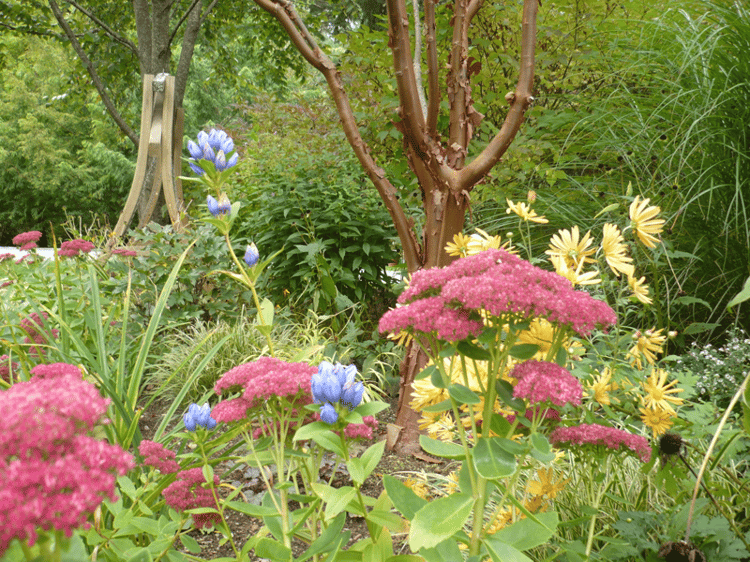
Late season bloomers will last longer if they have a little water support if the season is windy and stays warm and dry.
What about mulching now?
And don’t forget the mulch. While I don’t necessarily recommend a full mulching in the fall (especially when you can allot some of the leaves to linger behind in the beds to protect the ground), I do want to bring up the point that IF you do pick up all your leaves, please don’t rake and blow the entire mulch and duff layer of the landscape off in the process. The mulch layer (whether manually applied or naturally derived) is a crucial factor in preventing ground moisture loss. So be sure you have a good protective covering to stabilize ground temperatures and help avert critical moisture from evaporating more quickly in winter's dry conditions. Just remember to keep all mulch and leaves a couple of inches away from the base of trees and shrubs to discourage insect and rodent damage.
Do I cut back my garden totally?
All this talk about watering leads to another big question that comes up every fall: "should I cut back my perennials, or just leave them alone?" The most straightforward answer is that, in general, as long as your perennials look good, leave them alone. Sure, some may die back after the first heavy frost, but others will remain standing and add interest to your garden all winter long.
Not only can perennials add visual interest in the colder months, but they can also provide other advantages. Leaving the foliage and dried seed heads of plants intact until warmer weather offers much-needed food and shelter for animals – including beneficial insects. Dead foliage also retains leaves and snow to improve insulation and moisture.
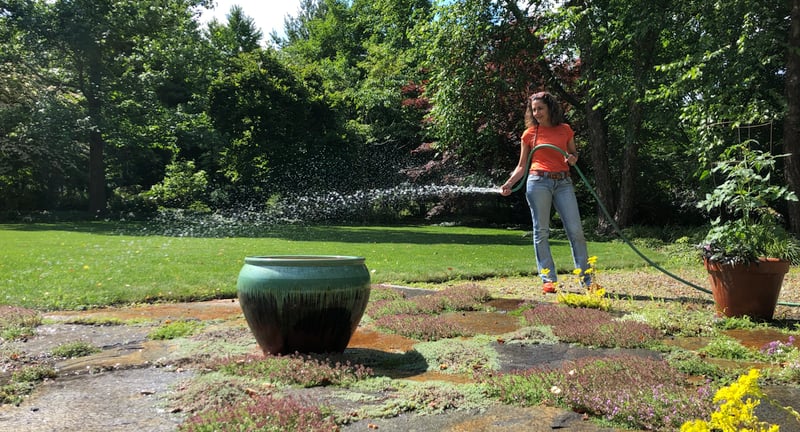
Hand watering in the early spring and late fall can help give plants in extreme exposures a boost as they emerge or go dormant.
Certain plants do benefit from being cut back in the fall. Rarely is this important aesthetically, but from a sanitary standpoint, it can make or break your next growing season. If insects or diseases attacked some of your perennials this year, the best thing to do is cut them back and properly dispose of the leaf matter in the trash and not the compost pile to avoid unintentionally encouraging any problems to reoccur. While many perennials can be safely cut back to within a couple of inches of the ground, some, like geranium and heuchera or lavender and germander for example should just be left alone.
Is fall too late to install new plants?
Since it's a good idea to keep watering into the fall, some of you may also be wondering about planting this late in the year. The good news is, even though it’s late in the season, your shrubs will be happier in the ground than hanging out in pots in a nursery somewhere. The same applies for plants being moved to a new location. So move them now. Ideally, trees and shrubs need about a month to establish roots before a heavy freeze, but it's okay to plant them anytime the ground is workable and still absorbing water.
There you have it. Fall now sounds like a much more active time to be working in the garden and around the yard, doesn’t it? Embrace the season as a transitional one for your plants and help them get ready for winter with a good watering, a layer of mulch and trimming where it’s needed. Your plants will thank you in the spring with even better growth and summer color.

TWEETABLE TIP
Support your garden with hand watering if the fall temps are warm and it's windy and dry outside
VIA @GardenContinuum




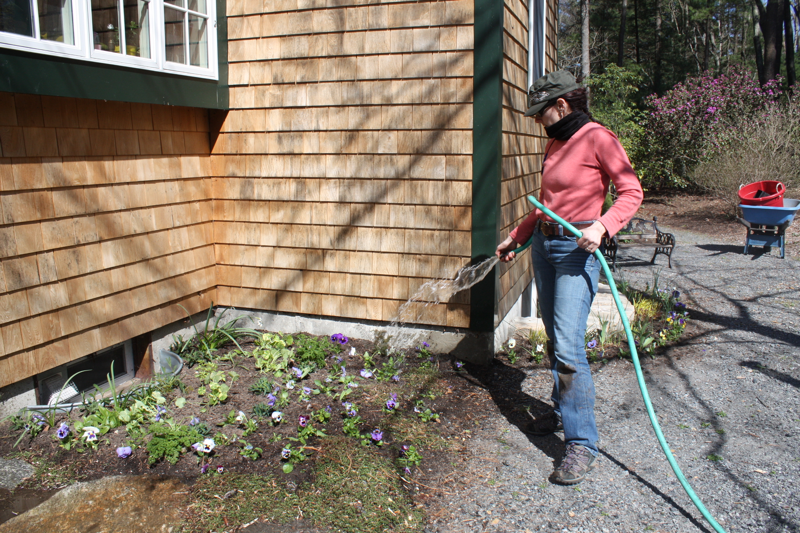







Leave a comment